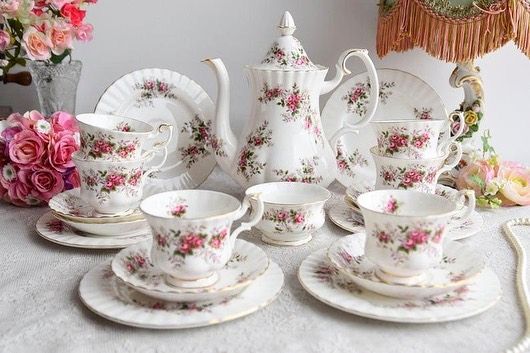Tea Set:A Delightful Tradition
English Afternoon Tea is a time-honored tradition that dates back to the19th century. It is a sophisticated and elegant social occasion that is still enjoyed by many people today. From the tea set to the menu, there are many components that make up a proper English Afternoon Tea. In this article, we will explore the history, etiquette, and components of an English Afternoon Tea.
A Brief History of English Afternoon Tea
The origins of English Afternoon Tea can be traced back to the1840s. It is said that the Duchess of Bedford, Anna Russell, first introduced the concept of afternoon tea. At that time, there were only two meals a day – breakfast and dinner – and it was customary to have a light snack in the afternoon. The Duchess of Bedford, however, found herself becoming hungry in the late afternoon and started requesting a tray of tea, bread, and butter to be brought to her room. She soon began inviting friends to join her, and the tradition of English Afternoon Tea was born.
The Etiquette of English Afternoon Tea
There are certain rules and etiquette that should be observed when attending an English Afternoon Tea. Firstly, guests should be punctual and arrive on time. It is customary for the host or hostess to introduce guests to each other, and for the guest of honor to be seated at the head of the table. Once seated, the first thing guests should do is to place their napkin on their lap. When pouring tea, guests should use the tea set provided and avoid stirring the tea with a spoon. Scones should be split in half and topped with clotted cream and jam. Lastly, it is considered impolite to take a second serving of food until everyone has been served.
The Components of an English Afternoon Tea
An English Afternoon Tea typically consists of three courses: savories, scones, and sweets. Each course is served on a tiered stand, with savories on the bottom, scones in the middle, and sweets on the top. The tea set used for English Afternoon Tea is usually a bone china set, which includes a teapot, cups and saucers, sugar bowl, and milk jug.

The Savories Course
The savories course is made up of bite-sized sandwiches, pastries, and other savory snacks. Popular sandwich fillings include cucumber and cream cheese, smoked salmon, and egg mayonnaise. Other savory treats may include sausage rolls, quiches, and mini pies. The savories course is usually served with a light tea, such as Earl Grey or Darjeeling.
The Scones Course
The scones course is the centerpiece of an English Afternoon Tea. Scones are typically served warm with clotted cream and strawberry jam. There are two types of scones: plain and fruit. Plain scones are served with butter, while fruit scones are studded with raisins or currants. Scones are traditionally served with a pot of English Breakfast Tea.
The Sweets Course
The final course of an English Afternoon Tea is the sweets course. This course consists of a selection of pastries, cakes, and other sweet treats. Popular sweets include macarons, petit fours, and fruit tarts. Chocolate truffles and fudge may also be served. The sweets course is usually accompanied by a floral or fruity tea, such as rose or jasmine tea.
The Tea Set
The tea set is an integral part of an English Afternoon Tea. The tea set is usually made of bone china and includes a teapot, cups and saucers, sugar bowl, and milk jug. The teapot should be placed on a tea cozy to keep the tea warm. The cups and saucers should be placed to the right of the teapot, with the saucer on the bottom and the cup on top. The sugar bowl and milk jug should be placed to the left of the cups and saucers.
Conclusion
English Afternoon Tea is a wonderful tradition that is still enjoyed by many people today. From the tea set to the menu, there are many components that make up a proper English Afternoon Tea. Whether you are hosting a tea party or attending one, observing the proper etiquette and serving the correct courses will ensure that the occasion is a success. So why not break out your tea set and enjoy a cup of tea with some friends today?